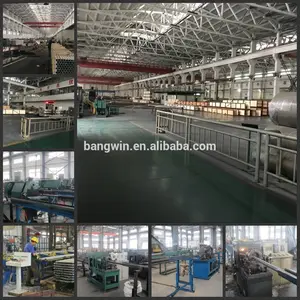
All categories
Featured selections
Trade Assurance
Buyer Central
Help Center
Get the app
Become a supplier

(7922 products available)



























Drum heaters are essential pieces of equipment used to heat products stored in drums. Depending on the structure and purpose, drum heaters can be classified into several categories.
The following specifications should be considered when purchasing a drum heating element:
Drum heaters require proper maintenance to ensure they operate properly. The following maintenance tips will help business buyers keep their industrial drum heaters in optimal condition:
Industries that deal with materials such as wax, honey, asphalt, frost, chocolate, and epoxy resin often use drum heaters to ensure the material is at the correct viscosity for easy dispensing.
They are very useful in construction industries, especially hot mix plants, drum heaters for bitumen are essential. They preheat and maintain the temperature of bitumen to ensure it flows and pumps easily during construction projects.
Logistics and supply chain management companies use drum heaters to maintain a constant temperature in chemical and food products while in transit or storage. This helps to prevent spoilage and ensure product integrity.
Manufacturing industries that use plastic, rubber, and paint often install drum heaters in their storage tanks to ensure the materials are at the right temperature and viscosity for easy processing and handling.
Drum heaters are also used to warm up equipment and tools such as hydraulic machines and cement. Heating these machines helps to improve fluidity, which in turn enhances operational efficiency.
Drum heaters can also be used during winter to thaw frozen pipes and equipment in order to avoid cracks and other damages. They are also used to heat up backup generators before they are fired up during cold weather to ensure they operate smoothly.
Business needs analysis:
Fit for purpose is the first box to tick when choosing a heater. Consider what temperature the business needs to heat the drum contents to and if the desired temperature can be reached with the drum heater. Also, check if the heater can heat the contents evenly at that temperature. For example, a drum heater for viscous liquids like molasses may not suit a heater for drum heating water.
Drum compatibility:
Verify the heater's compatibility with the material and shape of the drum. Standard drums have a diameter of 22.5 inches and a height of 27.5 inches, with 55 gallons (approximately 210 liters) of capacity. Ensure the heater will fit the drum if it is another shape or size.
Operating environment:
Consider the environment the heater will be in and choose a heater that can operate well in that space. For example, a drum heater may need to be waterproof to operate in wet environments, or it may need to work in an explosive atmosphere, calling for a hazardous location rating.
Power supply:
A drum heater's power source determines how far the business can go from power supplies. For example, a 240V AC drum heater will not be suitable for use in a location with no access to mains electricity, but a portable propane gas heater will be.
Cost:
Consider the upfront cost of purchasing the drum heater and the long-term cost of operating it. Higher power heaters cost more to run, so consider how often and for how long the heater will be in use. Sticking to a budget is important, but the cheapest option is not always the best in the long run.
Q1: What kind of power supply does the drum heater use?
A1: AC power supplies, such as 220V, 240V, or 380V, are commonly used in industrial drum heaters. Nonetheless, it is achievable to design heaters for alternative power sources such as solar energy, car power, or generator power.
Q2: How long does it take for the drum heater to heat up?
A2: The time taken for the drum heater to heat up depends on several factors: the wattage of the heater, the initial temperature of the material, the desired temperature, and the size and material of the drum. For example, a 1000-watt heater can heat up a drum (55 gallons) containing liquid at around 5 gallons per minute in a temperature increase of 10 degrees.
Q3: Can a drum heater be used to thaw frozen materials?
A3: Yes. Drum heaters can be used to thaw frozen materials by gradually increasing the temperature of the drum and its contents.
Q4: Can a drum heater be used outdoors?
A4: Outdoor use heaters are recommended in dry conditions. Operating heaters in damp or wet conditions may cause electrical hazards and equipment damage. A drum heater with an outdoor PVC blanket is suitable for outdoor use.
Q5: Can a drum heater be used to heat something other than a drum?
A5: Yes. A kettle heater can be used to heat other containers. However, evaluating the heater's suitability for the particular vessel is critical. Consider the size, form, and materials of the container. Ensure even heating and avoid any risk of ignition or reaction by doing so.